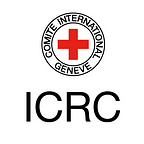Requiem Ishibumi: Singing for the lost students of Hiroshima
Some 190,000 survivors of the World War II nuclear attacks — the ‘hibakusha’ — still carry with them memories of death and destruction, radiation-induced diseases and social stigma. Three of them accepted to recount their story: Masao Tomonaga, Sadao Yamamoto and Yoshiro Yamawaki dig into the darkest reminiscences of their past in the hope that today’s world becomes free of the nuclear threat.
Sadao Yamamoto was born in 1931 and was 14 years old when the atomic bomb was dropped on Hiroshima on 6 August 1945. He was approximately 2.5 km away from the hypocentre when the bomb exploded. He has since become an advocate for the abolition of nuclear weapons through sharing his story. In 1970, he conducted the first performance of the Ishibumi Requiem. It has been sung every year since.
Mr Yamamoto’s full testimony was originally published in the International Review of the Red Cross edition on The human cost of nuclear weapons.
When the bomb was dropped, I was in the second year of junior high school. 140,000 people died because of the atomic bombing, including many students like myself. At that time, the population of the city of Hiroshima was about 350,000, including the military personnel stationed there and those who came from outside of the city; as much as 40% of the total population died in the bombing.
On 6 August 1945, at 8:15 a.m., the time of the bombing, I was in the east drill ground, and at that time we noticed there were three B-29 bombers flying over the sky from the southeast. There had been an air-raid warning, but it had been cancelled and there were only three planes, so we thought they must be doing reconnaissance.
We looked up into the sky and noticed that suddenly, after flying over the city, those planes turned around and flew away, which was strange. At that moment, we heard a roaring explosion and all of us were blown back onto the grass by a shocking wave of heat. I was knocked unconscious.
After I came to and stood up, I noticed that in the direction of the Hiroshima train station, there was a huge, pink pillar of fire. We thought the station must have been bombed.
After the bomb, all the people who were able to flee had fled. Many of those who could not escape died in the burning city. My aunt, one of my mother’s younger sisters, was in the Hondori Street area, about 400 metres from the hypocentre.
The day after, my mother told me to go there to see what was happening to her family. The house was still on fire. There had been some people there, but now all that was left were charred bones. One person I saw was just a skeleton, but the bones were on fire.
I did not find my aunt.
The first-year students at my school were engaged in building demolition work a little more than half a kilometre from the hypocentre. The atomic bomb exploded at a height of 600 metres above the ground, and it is said that the temperature on the surface of the ground around the hypocentre reached 3,000 to 4,000 degrees Celsius, an unimaginably high temperature, in an instant. It must have been a living hell for all of them.
Concretely, 8,187 students were mobilized in building demolition work with 176 teachers from thirty-five schools in the city. Out of these, 6,295 students and 132 teachers were killed by the bombing. This means that almost 77%, or three out of four, of the total mobilized students were killed. All of the older students from the schools who were mobilized to work in the demolition works near the hypocentre were killed.
I was astonished to learn that of the 321 first-year students, about a third were killed on the spot and some of them drowned in the river, but the rest of them, some of them severely burned all over their bodies, walked several kilometres to attempt to get back to their homes out of an ardent desire to see their parents. Some twenty students instead tried to go back to the school, led by a teacher. Some died on the way. Others jumped into the river, singing war songs together for encouragement.
Today, in the Peace Memorial Park, along Peace Boulevard, there are three monuments in memory of the student victims of the atomic bomb. One of them is for my school, the boys’ school; another is for the shipbuilding technical high school, and the third is for the girls’ school. The largest number of victims came from the girls’ school, from which all of the first- and second-year students, 544 students in total, were killed by the bombing, along with seven teachers.
I determined that it was necessary for me to share the tragedy of the first-year students of my school with the next generation in musical form. I asked a student from that year to write a song. The song is called Requiem Ishibumi.
At the time, I was a conductor for a male chorus. On 2 October 1970, we presented Requiem Ishibumi on the spot where the Hiroshima city public hall once stood.
The monument for the victims from my school stands on the riverbank, so we performed with the door open to the river and dedicated our song to the souls resting at the monument. Now this song is sung by the chorus group from the school every year. In 2015, the original members of the chorus [have sung] the song to mark the 70th anniversary of the atomic bombing.
We should never repeat the tragedy. I hope that we will have a peaceful world without wars and without nuclear weapons, and through this kind of testimony I am making every effort towards that goal.
